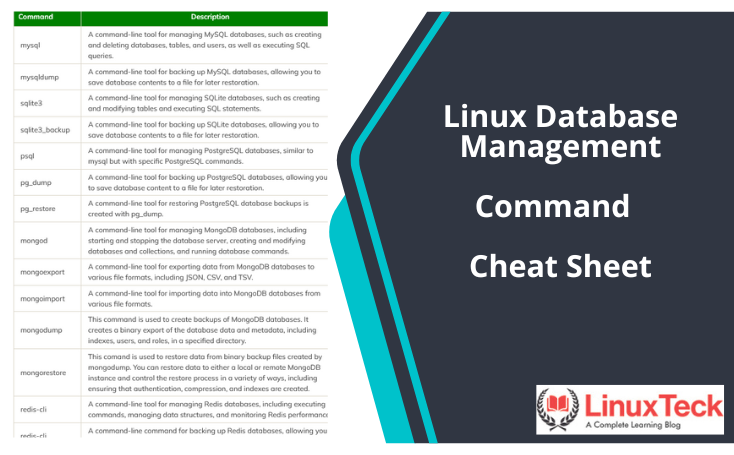The Linux Security command line interface manages security-related tasks on a Linux system. The commands in this section are used to create and monitor security features, as well as audit security on the system.
| Command | Description |
|---|---|
| passwd | Users can use this command to change their passwords. |
| chpasswd | This command is used to change the passwords of multiple user accounts at once. |
| chroot | By using this command, you can create a virtualized system with limited resources. |
| chmod | It is used to change the permissions of a file or directory. |
| chown | It is used to change the owner of a file or directory. |
| su | This command is used to switch to another user account. |
| sudo | This command is used to execute a command as another user, usually the root user. |
| ssh | This command is used to establish a secure remote connection to another system. |
| scp | This command is used to securely copy files between systems. |
| sftp | This command is used to securely transfer files between systems. |
| iptables | This command is used to manage firewall rules and configurations. |
| netstat | This command is used to display active network connections and their status. |
| tcpdump | This command is used to capture and analyze network traffic. |
| nmap | This command is used to scan and detect open ports on a system or network. |
| fail2ban | This command is used to monitor log files and ban IP addresses that show suspicious activity. |
| lynis | This is a security auditing tool for Linux and Unix-based systems. It performs a system scan and provides a report of security issues, recommendations, and configuration errors. |
| snort | Snort is a free and open-source network intrusion detection system. It monitors network traffic and alerts administrators when it detects suspicious activity. |
| gpg | GNU Privacy Guard (GPG) is a free software implementation of the OpenPGP standard. It is used for encrypting and signing files and emails. |
| openssl | This command-line tool is used for encryption, decryption, and certificate management. It supports a wide range of cryptographic algorithms and protocols. |
| ufw | Uncomplicated Firewall (UFW) is a user-friendly front-end tool for managing iptable firewall rules. It simplifies the process of configuring firewall rules by providing a set of pre-configured profiles for common services and applications. |
| firewalld | This command-line tool manages firewall rules on Linux systems. It provides a dynamically managed firewall with support for network zones and services. |
| selinux | This is a security module that provides mandatory access control for Linux systems. It restricts access to resources based on the security context of processes and files. |
| chkrootkit | A command used for detecting rootkits and other types of malware on a Linux system. |
| rkhunter | A command used for detecting rootkits, backdoors, and other types of malware on a Linux system. |
| auditd | A command used for auditing and monitoring system activity. It records events and activities on the system, allowing you to investigate security incidents. |
| logwatch | This is a command used for analyzing log files and generating reports. It can be used to detect security breaches and other unusual activity. |
| tripwire | This command is used for file integrity monitoring. It detects unauthorized changes to critical system files and alerts you to potential security breaches. |
| apparmor | This is a security framework that provides mandatory access control for Linux applications. It can be used to limit the access of applications to critical system resources. |
| OpenSCAP | This command is used for system hardening and compliance checking. It provides a framework for assessing and improving the security posture of the system. |
| AIDE | This is an advanced intrusion detection system that monitors files and directories for changes. It can help detect unauthorized changes to system files, which may be a sign of a security breach. |





